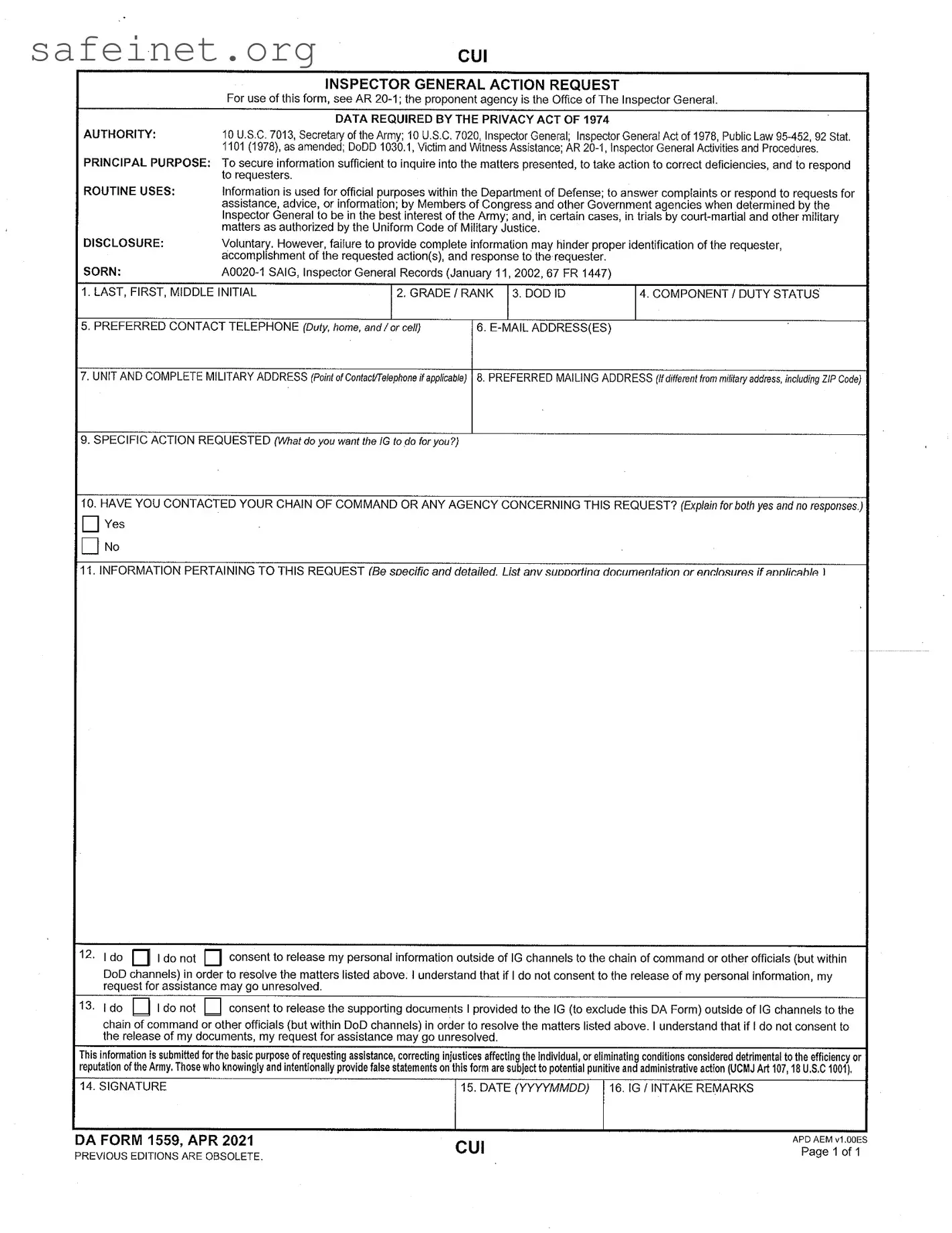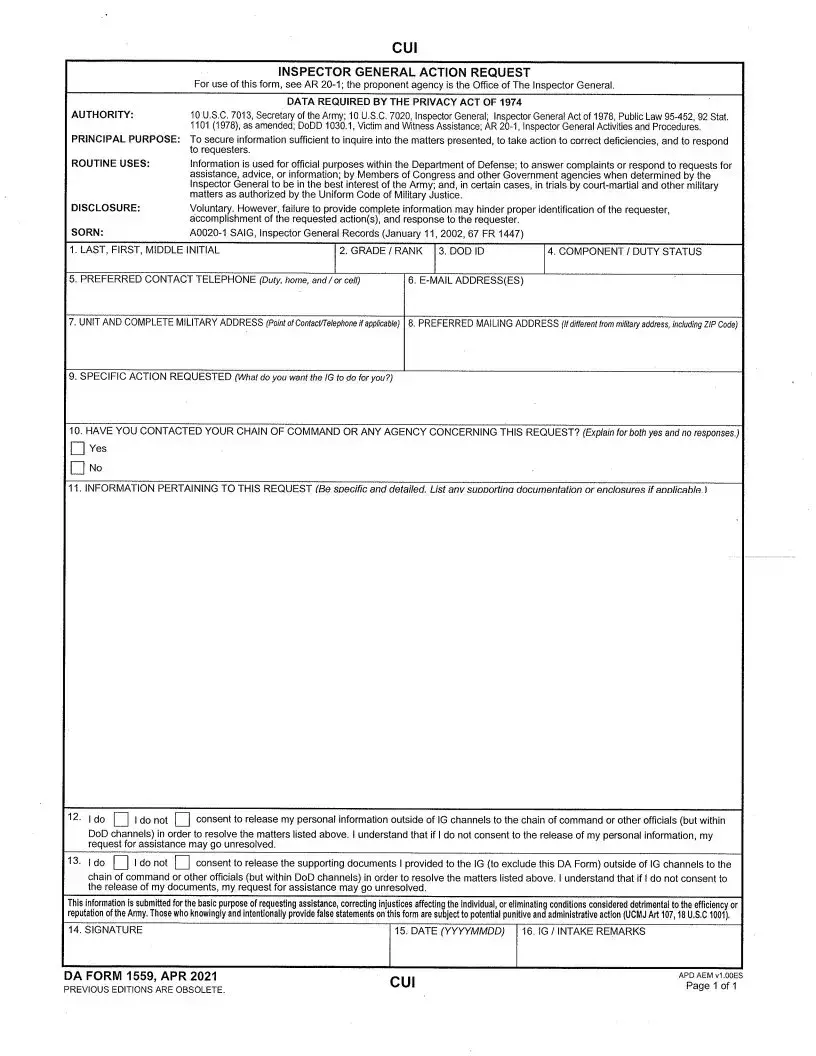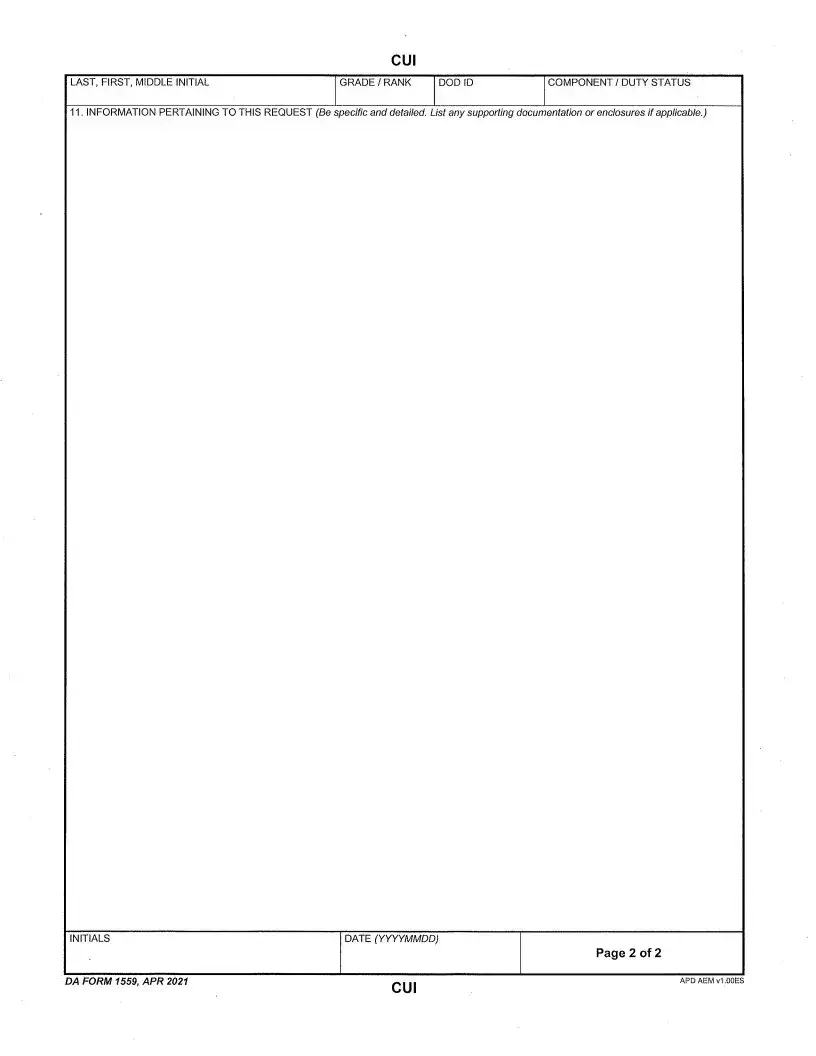The DA Form 1559 serves as an official channel for individuals within the Department of Defense to request assistance or raise concerns. A similar document is the DD Form 149, Application for Correction of Military Record. This form allows individuals to request changes or corrections to their military records, addressing inaccuracies akin to those addressed in complaints submitted via the DA Form 1559. Both forms require clear identification, reason for the request, and may lead to significant adjustments in an individual's records or circumstances based on the findings of the review process.
Another closely related document is the DA Form 2823, Sworn Statement. This form is utilized for gathering firsthand accounts or statements regarding incidents or issues relevant to a military context. Like the DA Form 1559, it collects detailed information from the individual, emphasizing the importance of accurate and specific accounts. Both documents play crucial roles in formal inquiries, supporting the integrity and transparency of military processes.
The Inspector General Complaint Form mirrors the DA Form 1559 in function and purpose. This form allows military personnel and civilians to report misconduct or violations of regulations within the Department of Defense. Similar to the DA Form 1559, it aims to facilitate accountability and provides clear avenues for addressing grievances, ensuring that proper action can be taken as necessary.
In terms of mental health support, the DD Form 2986, Application for Mental Health Counseling, can also be compared to the DA Form 1559. This document allows service members to request mental health services, much like the DA Form 1559 allows for requests related to performance or conduct issues. Both forms underscore the need for addressing individual issues within the military framework while protecting the privacy and rights of the individuals involved.
The DA Form 4856, Developmental Counseling Form, is another similar document. It is used by leaders to document counseling sessions with service members about issues such as performance or behavior. Much like the DA Form 1559, it facilitates open communication and supports the corrective measures needed to sustain a functional military environment, fostering an understanding between parties involved.
Additionally, the SF 86, Questionnaire for National Security Positions, provides a comparison. Although its primary purpose is to gather information for security clearance, it shares a similar structure in requesting personal data and the need for accuracy and consent. Like the DA Form 1559, it emphasizes the importance of truthful disclosure within a regulatory context.
The AF Form 1168, Statement of Suspected Wrongdoing, complements the DA Form 1559 by enabling individuals to document and report suspected misconduct or criminal activity within the Air Force. Both forms require a detailed account of the actions in question, ensuring that proper channels are followed for investigation and resolution.
The DA Form 7432, Request for Army Emergency Relief (AER) Assistance, shares similarities with the DA Form 1559 in that it seeks assistance but focuses specifically on financial or emergency needs. Instead of reporting issues, this form is a direct appeal for aid within the Army community, reflecting the service members' active involvement in seeking help through established protocols.
Finally, the AR 600-20, Army Command Policy, outlines the broad framework for addressing claims of unfair treatment or discrimination, much like the DA Form 1559. While not a form itself, it establishes protocols that support the use of the DA Form 1559 and similar documents in ensuring that service members are treated equitably, ultimately reinforcing the principles embedded in all these forms.


